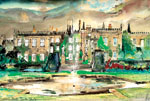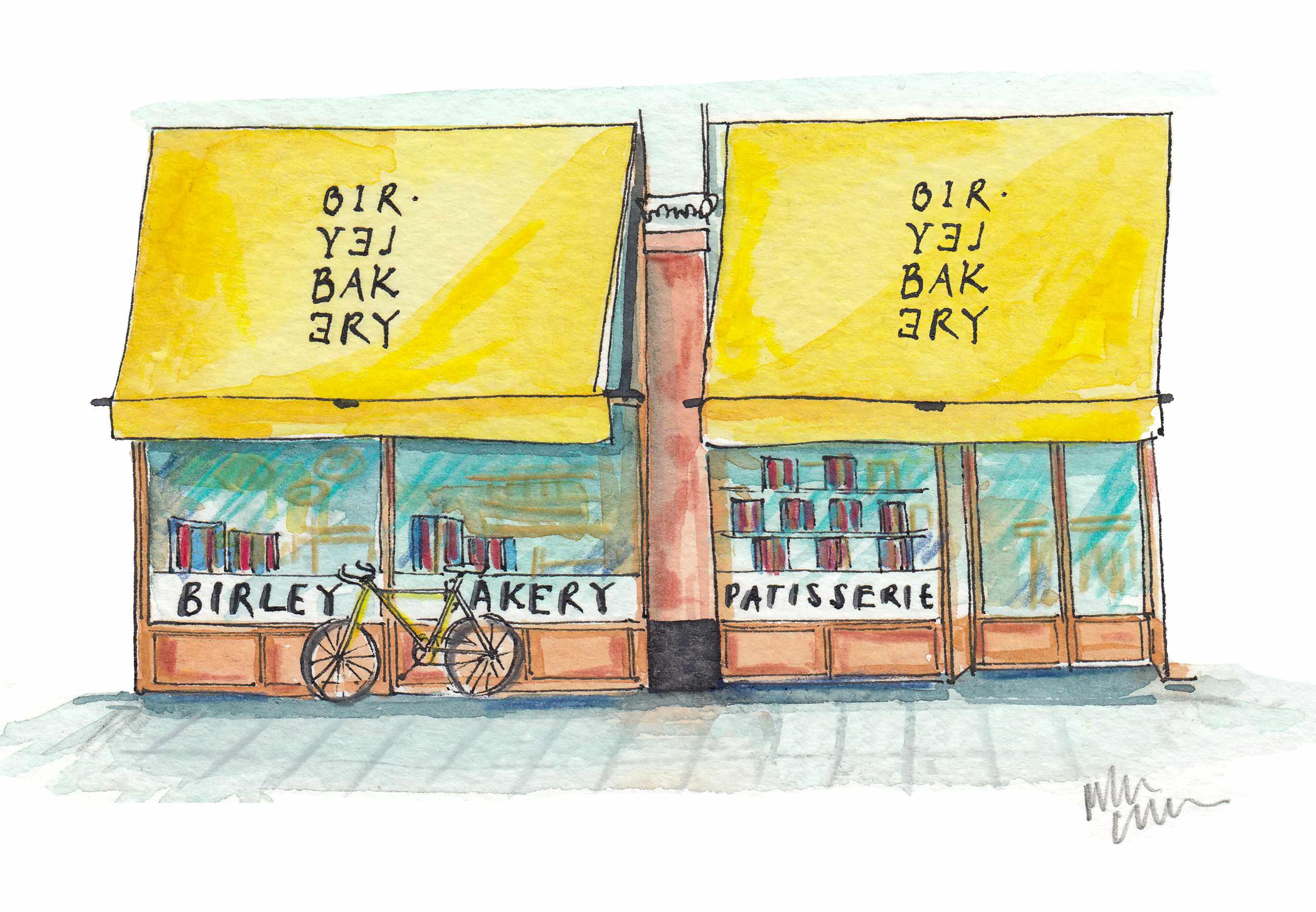John and Edward Piper
Jeremy Musson is intrigued by the work of three generations of the Piper family, on view in two exhibitions, one of which opens this week


John Piper is, in many ways, one of the towering figures of mid 20th century British art, although he was sidelined by critics in his lifetime. Now, his profile as a leading Neo-Romantic has led to a major reassessment of his career. According to his friend and biographer Richard Ingrams, Piper famously turned his back on a job at his family firm of solicitors and was wryly amused at having founded his own family firm of sorts instead. Two generations of Pipers are still working as artists in Somerset.
Although they work in diverse media, they share John Piper's tradition of obsessive experimentation. A new show at Renishaw Hall in Derbyshire, a house that meant a great deal to John Piper, and a concurrent show of about 50 works at David Messum's in Cork Street, London, create the perfect opportunity to compare the works of John; his son Edward, who died in 1990; Edward's wife, Prue, a scientist turned ceramicist; and their sons, Luke, a painter, and Henry, a sculptor.
John Piper was a highly original artist, famous for what John Betjeman called his 'seeing eye' a visionary painter whose work echoes with the poetry of Blake and the paintings of Samuel Palmer. He had a special feeling for architecture, not only the great houses, but the ordinary stucco terraces and country churches as well, and for the relationship of these buildings to the landscape in which they sit. His memorable work during the Second World War included recording bomb damage and irreplaceable buildings. With the Sitwells, Piper was said to have found 'a territory peculiarly suited to his sombre, but fiery genius'. Versatile and ambitious, his largest work is the stained-glass window he designed for Coventry Cathedral.
John's son, Edward, collaborated with his father on photography for the famous Shell County Guides, but his paintings are a surprising contrast to his father's paintings: colourful, immediate pictures in watercolour and pastel of life models, naked and joyful. He trained at Corsham Court, where he was taught by Howard Hodgkin and Anthony Fry, and at the Slade School of Fine Art, against which he deliberately rebelled, looking instead to the qualities of Dufy and of Matisse. 'I actually believe now that what the Slade called a weakness was in reality a strength,' Edward said. 'I dislike my work thoroughly when it seems laboured. I like it to be sweet and swift without any signs of graft.'
Prue, his widow, a self-trained ceramicist, still works at The Old Laundry near Frome, where they set up home in the 1960s. She produces highly original slipware, inspired by primitive cultures and folk art with brightly patterned decoration. She works using the kiln that John Piper had at his home in Fawley Bottom and produces everyday things that touch on the extraordinary. 'There's a lot of fun in turning an idea into a solid object?the fun is in problem solving.'
Edward's studio is now home to his youngest son, Henry, who makes sculpture out of found objects: everything from bedsprings to driftwood, typewriter keys to window latches. His brother Luke lives and works nearby and has produced a new series of studies of great Derbyshire houses in homage to his grandfather's work, associated with his visits to Renishaw. These capture the same spirit of John Piper's work, but bring additional colour and spatial sense to the houses, which seem to contain the essence of England in their walls.
'The Pipers in Cork Street: An Artistic Dynasty' is at David Messum's in Cork Street until June 23 (020?7437 5545), and the related exhibition 'Three Generations of Pipers' at The John Piper Gallery at Renishaw Hall, near Sheffield, runs until September 30. Renishaw Hall is only open Thursday to Sunday and Bank Holiday Mondays, from 10.30am to 4.30pm (01246 432310; www.sitwell.co.uk).
Sign up for the Country Life Newsletter
Exquisite houses, the beauty of Nature, and how to get the most from your life, straight to your inbox.
Country Life is unlike any other magazine: the only glossy weekly on the newsstand and the only magazine that has been guest-edited by HRH The King not once, but twice. It is a celebration of modern rural life and all its diverse joys and pleasures — that was first published in Queen Victoria's Diamond Jubilee year. Our eclectic mixture of witty and informative content — from the most up-to-date property news and commentary and a coveted glimpse inside some of the UK's best houses and gardens, to gardening, the arts and interior design, written by experts in their field — still cannot be found in print or online, anywhere else.
-
 'That’s the real recipe for creating emotion': Birley Bakery's Vincent Zanardi's consuming passions
'That’s the real recipe for creating emotion': Birley Bakery's Vincent Zanardi's consuming passionsVincent Zanardi reveals the present from his grandfather that he'd never sell and his most memorable meal.
By Rosie Paterson
-
 The Business Class product that spawned a generation of knock-offs: What it’s like to fly in Qatar Airways’ Qsuite cabin
The Business Class product that spawned a generation of knock-offs: What it’s like to fly in Qatar Airways’ Qsuite cabinQatar Airways’ Qsuite cabin has been setting the standard for Business Class travel since it was introduced in 2017.
By Rosie Paterson